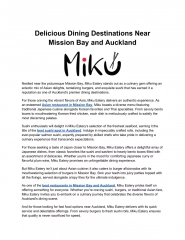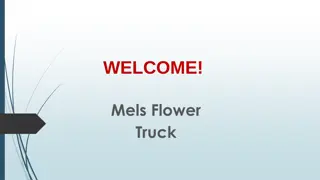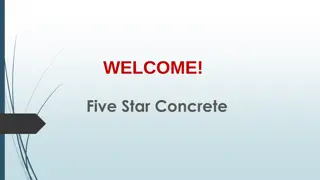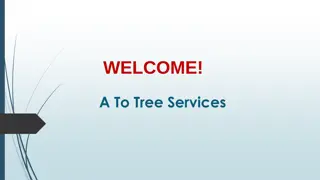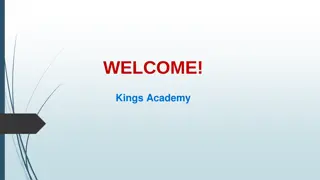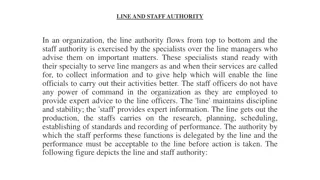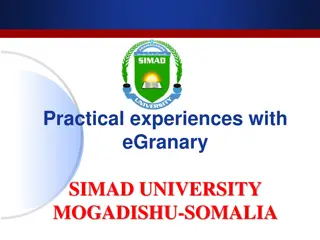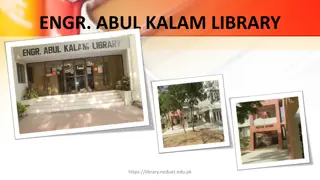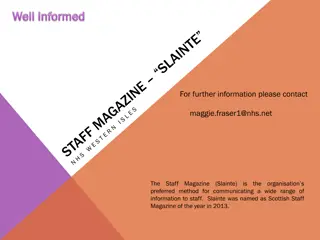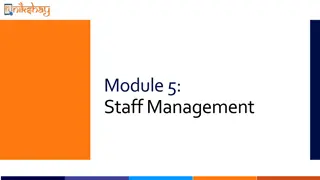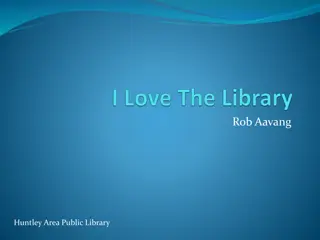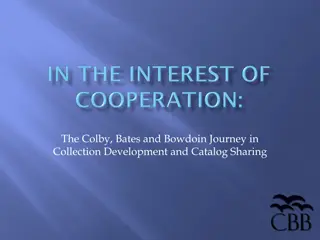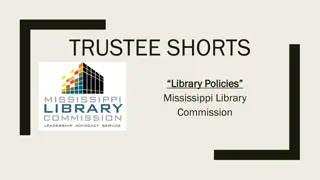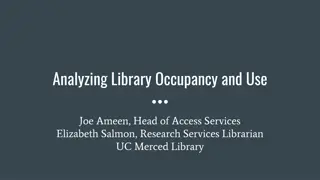Enhancing Staff Development Initiatives at University of Auckland Library
The University of Auckland Library is committed to promoting professional and personal growth among its staff members through a comprehensive development program. The Library Staff Development Advisory Group plays a key role in identifying training needs, planning annual programs aligned with strategic goals, and fostering a culture of innovation and excellence. Competencies are reviewed to ensure staff success in a rapidly evolving digital environment. Projects include creating and reintroducing staff orientation programs to equip employees with the necessary skills and attributes.
Download Presentation

Please find below an Image/Link to download the presentation.
The content on the website is provided AS IS for your information and personal use only. It may not be sold, licensed, or shared on other websites without obtaining consent from the author.If you encounter any issues during the download, it is possible that the publisher has removed the file from their server.
You are allowed to download the files provided on this website for personal or commercial use, subject to the condition that they are used lawfully. All files are the property of their respective owners.
The content on the website is provided AS IS for your information and personal use only. It may not be sold, licensed, or shared on other websites without obtaining consent from the author.
E N D
Presentation Transcript
Staff development at the University of Auckland Library -Te Tumu Herenga Endeavouring to get what it takes in an academic library People in the Information Profession Conference Claudia Adams October 2009
Library Staff Development Advisory Group Frame of reference: To promote and encourage professional and personal development of library staff. To identify library staff training and development needs, taking into account information from development reviews and advice from supervisors. To plan and implement an annual programme of staff training and development that is aligned with the library s strategic direction. To advise the University Librarian on issues relating to staff training and development. To facilitate the sharing of learning from staff development opportunities among other library staff, including discussion of common problems and solutions in order to promote best practice. To analyse and evaluate feedback from staff about training activities in order to identify quality programmes.
The Library annual plan states the Library should.. Encourage a Library culture of innovation, collaboration, cultural awareness, a commitment to excellence and high job satisfaction (15.1) and provide Library staff with a quality orientation and development programme that helps to equip them to be effective in a rapidly evolving digital environment (15.2) .
Projects Create staff development programme Re-introduce a Library Staff orientation programme
Create a staff development programme
Why competencies? Competencies review/development reviews/advice from supervisors skills, technical knowledge and personal attributes that contribute to an individual s success in a particular position McNeil, B., & Giesecke, J. (2001). Core competencies for libraries and library staff. In E. F. Avery, T. Dahlin & D. A. Carver (Eds.), Staff development: a practical guide (pp. 49-62). Chicago: American Library Association. ALA (position), ALIA, LIANZA (IFLA), CILIP, LATN
Skills & attributes matrix 1. Personal skills 2. IT skills & knowledge 3. Management 4. Customer services 5. Teaching & learning 6. Information resources, knowledge & management 7. Professional, organisational & institutional knowledge 8. Biculturalism
Communi- cation Adminis- trative skills Time manage- ment Accuracy /attention to detail Work ethic PERSONAL SKILLS Health & safety Motivation Team work/ inter- personal skills Critical thinking
Priorities identified Organisational skills | Difficult service situations| Keeping safe
Hardware Database manage- ment Software IT SKILLS & KNOW- LEDGE Online communi- cation Networking Web publishing
the benefits of working as trainers should not be underestimated. Often the people who do the work day-to-day make the best trainers. Rather than a section manager showing a new member of staff how a particular piece of software works, why not let the assistant who uses it every day show the new colleague? (Webb, 2004, p.102). Webb, J. (2004), Development routes for academic library support staff in Developing academic library staff for future success edited by Oldroyd, M. London, Facet Publishing, pp.95-111.
Priorities Web 2.0 | BBFlash | Outlook | Desktop publishing | Dreamweaver | Office 2007 new features | Presentation tips & skills|
Managing staff Risk Service management management Planning strategic & operational Health & safety MANAGEMENT Financial management Leadership Managing resources & facilities Negotiating, lobbying & networking Employment
Priorities Report writing | Recruitment practices
Service levels & delivery CUSTOMER SERVICES Service reviews Marketing
Priorities Customer services | Conducting reference interviews
Learning design TEACHING & LEARNING Learning delivery Pedagogy University s T & L
Priorities Ongoing . New presenters training (Learning Services) Library resources training Subject Librarian needs analysis study NEW!
Searching skills Collection management Circulation INFORMATION RESOURCES, KNOWLEDGE & MANAGEMENT Resource creation & description Document delivery
Priorities | Mending NEW! Weeding
Library & University PROFESSIONAL, ORGANISATIONAL & INSTITUTIONAL KNOWLEDGE Relationship building
Cultural diversity - bicultural & multicultural BICULTURALISM Treaty of Waitangi Equal opportunities
Benefits of a skills & attributes matrix Working off other lists/creating your own? Helpful tool to identify priorities & create a programme Raises awareness of the types of skills required across library positions For personal development can help identify skills & courses Useful to refer to when providing justifications for more in-depth needs analysis studies Framework to expand & explore competencies
LSDAG meetings Create/ refine/ develop skills & attributes matrix Commission training & advertise Create programme/ UL approval Feedback from LMT & HoDs Review & prioritise areas for training Link training & identify gaps
Re-introduce an orientation programme for new staff
Orientation GOAL: to provide an overview of the library system to new staff members and provide an introduction to the physical and organisational structure of the library Supplement the training and induction that each new staff member received as part of their introduction to their jobs
Updated information pack (twice a year) New Staff Welcome Tours
Updated information pack (twice a year) New Staff Welcome Tours
Findings Developing a skills matrix helped to identify gaps & create a programme A mix of staff from across the system fed in ideas from different areas Using sub-committees helps to achieve results quickly, work load is shared Senior management involvement beneficial Staff development opportunity Staff orientation sessions very well received
What next? Develop matrix Accommodate evening & weekend staff Introduce research culture Consider the impact of the university s new development & salary review process Evaluate the programme & processes Refine policy & processes
Back to the future embedded services mobile technologies disintermediation of information
opportunities for rapid progress will appear for the grasping, but unless we are prepared to seize them at the right moment, they may vanish Collectively, therefore, librarians should have a clear idea of the changes they wish to effect, and should work out now the steps required to bring them about.
opportunities for rapid progress will appear for the grasping, but unless we are prepared to seize them at the right moment, they may vanish Collectively, therefore, librarians should have a clear idea of the changes they wish to effect, and should work out now the steps required to bring them about. Paton, W. E. (1942). The library of the future. Library Review, 8(5), 163 - 168.
credits Acknowledgements to: Carol Catley, Hester Mountifield, Li Wang, Joanne Rowan and Nigel Adams Images: Clock: http://www.flickr.com/photos/macinate/2039579864/ Angry toddler: http://www.flickr.com/photos/gee01/2190903226/ Report writing: http://www.flickr.com/photos/gi/105450306/


